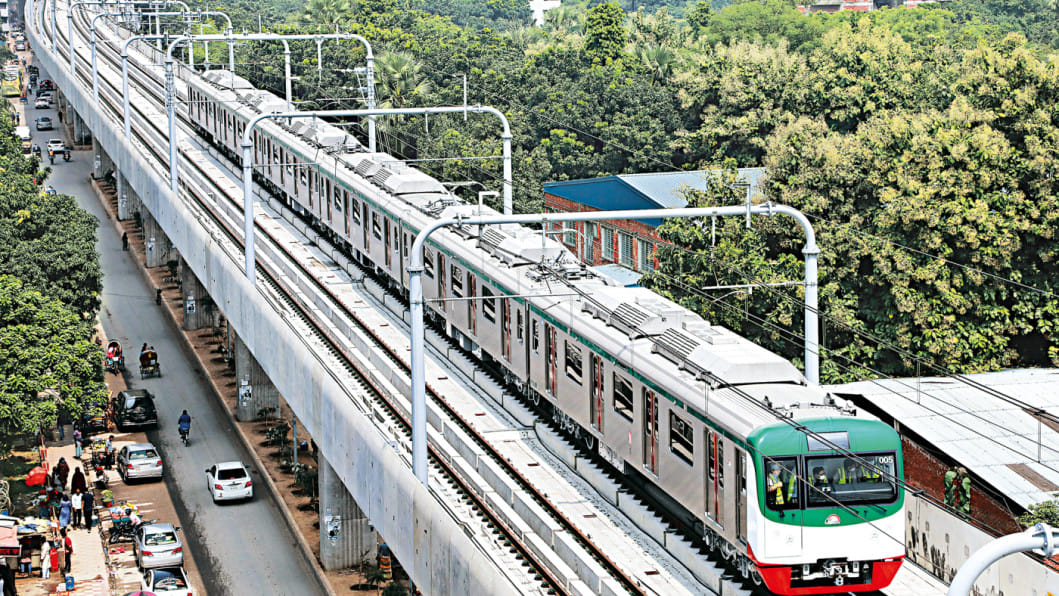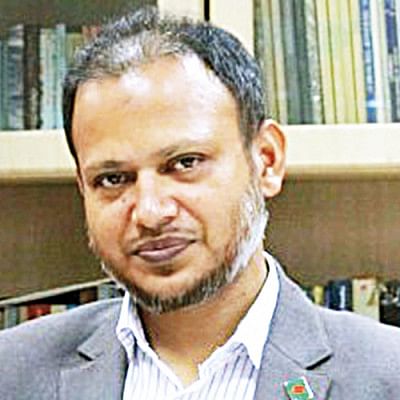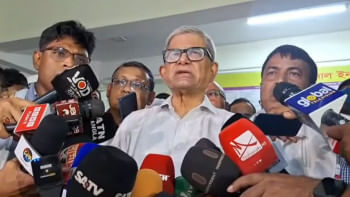“If we cannot keep the targeted population near metro rail then number of riders may fall”

The Daily Star (TDS): What changes will the MRT-6 bring to urban living experience?

Adil Mohammed Khan (ADM): After the launching of MRT-6, a new feather has been added to our transportation system in one of the major corridors of Dhaka -- Uttara to Agargaon. However, it is highly unlikely that the partial opening of MRT6 will bring major changes to overall living experience of Dhaka dwellers. Basically, a change in transport behavior will come for those who are living in that particular area.
This is just the beginning of a mega project under which another five lines will be added to different corridors of Dhaka city. Only then we can say people have metro rail centric transportation when the project successfully completes. But it will take time.
However, the ripple effect of the MRT will be huge. Due to the metro rail, a change has occurred in the land use from Uttara to Agargaon. For example, the lands in Uttara sector 18 rapidly developed in terms of plot development and real states due to being one of the earliest metro corridors.
It is a common nature of urban development that linear developments occur when a transport system develops in a certain area. As a part of this, the commercial nature has also changed from Mirpur to Uttara. Higher commercial activities have started. The high order services have replaced the low order services. One such example is gradual increase of big brand's shop in that particular zone which has impact on small scale business. However, the change in lower order to higher order is an economic change which may not explain only positivity always.
TDS: How are you perceiving the change as an urban planner?
ADM: On one hand, it is true that the city's economy will grow over time. On the other, it is also the responsibility of the state to protect the rights of middle and lower-income class and business. If above mentioned changes happen in any area and the state has no control over it, in academic language we call it gentrification.
One simple example of gentrification could be when relatively marginal economic activities or housing gradually get replaced by higher order; due to rise in land value and economic activities. The number of lower and middle-income people is quite significant in certain areas of Mirpur such as Shewrapara or Kazipara. It will be seen that in long run, high order residential and real states development will take place due to metro rail. This will replace the lower and middle class from there. It is one of the major obstacles of metro rail's success.
Theoretically, it is being predicted that everyone will use metro rail. However, globally wealthy people don't use metro rail due to its factor of multimodal system. Even though in some countries people are being forced to use metro rail by enforcing strict policy and regulation. But in Bangladesh, it is hardly possible because of its poor record of policy implementation.
One of the main objectives of metro rail is to ensure easy connectivity for people from middle and lower-income class. If we cannot keep them near metro rail then the expected number of riders may fall. The government must ensure the presence of middle and lower-income people near metro rail station areas through controlling land use. It is not possible without strict planning and governance. If government leaves this on market, it will gentrify every order from business to housing. The government should monitor the land use strictly, however, the fear lies with the weak regulation of Bangladesh. If the targeted population of the metro rail project shifts from the corridor areas because of gentrification, it will be hard to raise the investment.
TDS: What the government should do to make the project passenger-friendly?
ADM: The first challenge will be managing the station centric population. There will be two types of loads; one is people to ride on the rail and the other is people going down from the rail. There is a need of proper planning of the station and surrounding areas to manage the rider flow and ensuring different mode of transport to divert the flow from the station to different destinations.
The transit radius including station and surrounding areas must be developed keeping in mind about ensuring small and middle scale business, and affordable housing through Transit Oriented Development (TOD) plan. Without affordable housing and business prospects in transit area, smooth movement of a passenger from origin to final destination may be hampered.
Surrounding areas of stations from Uttara to Agargaon is already crowded. The load of passenger will create additional pressure after the metro rail starts functioning. We are yet to build the multimodal integration system in the station areas to ensure hassle free movement of people to different destination from the stations. The rider may reach one location to another within a short period of time by using metro rail but due to lack of multimodal system, congestion will occur. For that, the people will not be able to enjoy the advantage of metro rail full-fledged.
Considering the reality of the Dhaka city, it will not be possible to redevelop the entire area. But there is scope to work on low-impact development such as walking alleys, relocating the rickshaws, CNGs and other similar transportation station in a standard walking distance from the station and ensuring monetisation of small vehicle mobilasation to avoid traffic in landing areas of the station. Such low impact plans need to be implemented as soon as possible. For long-term, the government can plan for limited re-development.
Plan to manage the station centric population though such low-impact development should be taken along with the station. It would be great if the transit station plan and metro rail plan can be done simultaneously.
What concerns us is such designs of big projects are usually leaded by foreign consultant. Some design may not suit us since their economic and societal reality varies from ours. It would be more effective if the TOD plan is done by local architects, engineers. Because the plan should be done by including metro rail corridor based middle and lower class in those particular areas so that much resettlement doesn't happen.
The metro rail will create a speedy connectivity and network for residents in the important corridors of Dhaka city. People will be able to reach one location to other faster. If we cannot implement the multimodal system, it wouldn't be possible to achieve the benefits of metro rail.
TDS: How much consistent is the Detailed Area Plan (DAP) with the Dhaka Metro Rail Project?
ADM: DAP claimed that high investment projects like metro rail wouldn't be financially viable. Moreover, it is mentioned that only 15 to 20 percent of our total targeted population will use the metro rail, even if all the line of MRT starts operating. Rest of the population will use the other mode of transportation. Unfortunately, it hasn't provided pin-pointed proposal which analyzes possible alternatives.
It is like one government authority has assimilated other government authority's plan. Instead of incorporation, DAP should have given a detailed alternative direction.
DAP's points should be considered in the RSTP's ongoing revision by Dhaka Transport Coordination Authority (DTCA). The DTCA should do realistic revision focusing on alternative solutions and finding out how many MRT lines are essential and financially viable at this moment.
Interviewed by Saudia Afrin, The Daily Star

 For all latest news, follow The Daily Star's Google News channel.
For all latest news, follow The Daily Star's Google News channel. 



Comments